The Cessna 340: One Of General Aviation’s Most Popular Pressurized Twins
Featured Image: Courtesy of Jessica Ambats
Cessna had a great thirty-year run with the Cessna 310 twin. And less than twenty years after the first flight of the 310, Cessna had dreams of introducing the first pressurized light twin based loosely on the 310. This would become the Cessna 340. While Beechcraft just barely beat out Cessna for bragging rights about having the first pressurized light twin with the Duke, Cessna’s 340 would quickly outsell the Duke and become the world’s most popular aircraft in this category.
Development of the Cessna 340
The Cessna 340 at first glance looks an awful lot like the 310, despite the fuselage being five feet longer. The fuselage has the same basic shape but was completely redesigned due to pressurization requirements. The empennage, however, is based on design features from the 310. Cessna then took the wings from the 414 and added them to this aircraft, making the 340 somewhat of a hybrid. Cessna wanted to keep this aircraft in the 300-series to make it more marketable to your average twin buyer. The first deliveries of the Cessna 340 began in 1972.
The Cessna 340 was originally equipped with two 285 hp turbocharged Continental TSIO-520-K fuel injected engines with three-bladed propellers. As is always the case with aircraft development, these aircraft engines proved to be slightly underpowered. So in 1976 Cessna introduced the Cessna 340A, which was now fitted with 310 hp TSIO-520-Ns. Cessna also shortened the propeller blades on this model to meet noise reduction standards, and slightly changed the cabin pressurization schedule.
The 340 became so popular that Cessna decided to offer an unpressurized version for those who wanted the other features of the 340 but at a lower cost. This aircraft, the Cessna 335, began production in 1979 and had some slightly smaller engines. But as it turned out the main reason people liked the 340 was for its pressurization, and the 335 wasn’t selling. Cessna ceased production after only one year and 64 aircraft.
Cessna kept up with the high demand for the 340 through 1984. When the last aircraft came off the line, Cessna had built 1,287 aircraft.
Modifying the Cessna 340
A number of various engine modifications, mostly from RAM Aircraft, increased available horsepower to as much as 335 per side and many of these aircraft are flying today.
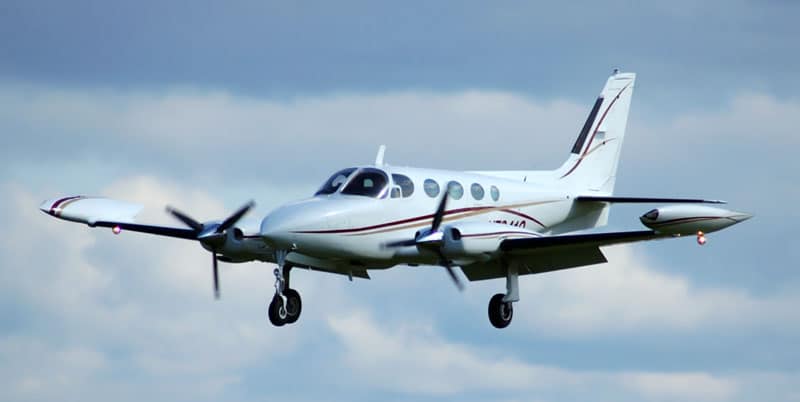
But for increased performance, a much easier and cheaper modification swept through most of the fleet, and that was the addition of vortex generators. Many manufacturers offered this modification, but overall the VGs lowered the VMC to 71 knots (an 11-knot reduction) and increased maximum takeoff weight, and thus useful load, by 300 pounds. This allows carrying one or two extra passengers, or over an extra hour of flight time in fuel load.
The Cessna 340 is also available in many different fuel configurations. The main tanks are mounted on the wingtips. These tip tanks hold 50 gallons a side and are complemented by auxiliary bladder-style tanks within the wings themselves. These auxiliary tanks have a capacity of 31.5 gallons a side. So in the standard configuration, the 340 can hold 163 gallons. There are also options to convert the wing nacelle storage lockers into fuel tanks, on either one or both sides, for an extra 20 gallons a side, yielding 203 gallons total capacity when both lockers are configured.
Flying the Cessna 340
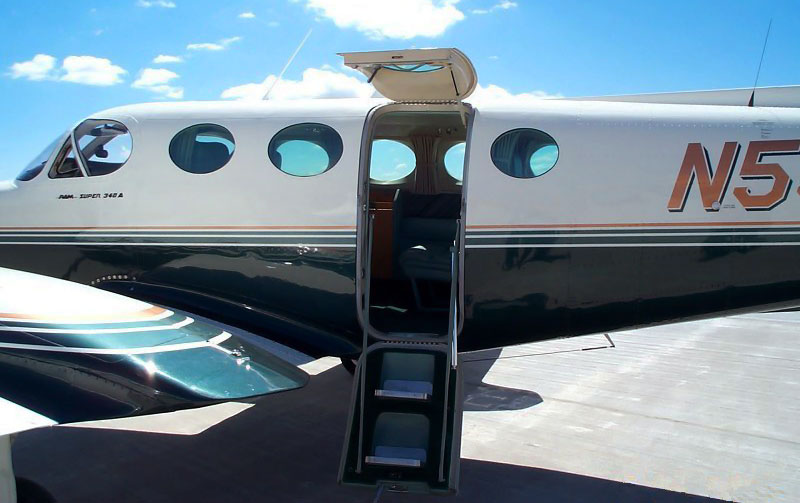 Entry into the Cessna 340 is like that of the Beechcraft Duke, via airstairs into a very roomy cabin. The rear four seats are arranged in a club configuration, with the middle row facing backward, giving passengers a little more legroom when they’re not knocking knees. Still, with the length of the fuselage, passengers rarely feel cramped. There is plenty of storage in the aft cabin for items you want to keep pressurized and out of the cold, as well as storage in the nose and wing nacelles (when not converted to fuel tanks).
Entry into the Cessna 340 is like that of the Beechcraft Duke, via airstairs into a very roomy cabin. The rear four seats are arranged in a club configuration, with the middle row facing backward, giving passengers a little more legroom when they’re not knocking knees. Still, with the length of the fuselage, passengers rarely feel cramped. There is plenty of storage in the aft cabin for items you want to keep pressurized and out of the cold, as well as storage in the nose and wing nacelles (when not converted to fuel tanks).
The same spaciousness holds true up front where the pilot(s) will find the standard Cessna twin panel arrangement. The Cessna 340 was also offered with Roman Numeral designators. The designators simply reflected the instrumentation package and nothing more. The 340 II was shipped with instrumentation from the 400-series Cessnas while the 340 III had instrumentation from the 800-series Cessnas. Today’s 340s, however, will rarely still have the production instrumentation installed.
There’s not much to flying the Cessna 340. Perhaps the biggest complaint of new pilots is keeping track of the fuel between the various tanks, but this becomes a non-issue after just a few hours of flying time. Takeoffs and landings will almost make a pilot complacent. Landing doesn’t even really require a flare – set the attitude early, pull the power, and the airplane settles itself onto the runway. The Cessna 340 has a published climb rate of 1,650 feet per minute in standard conditions, and that climb rate drops to 315 feet per minute on one engine. Reality will yield slightly less.
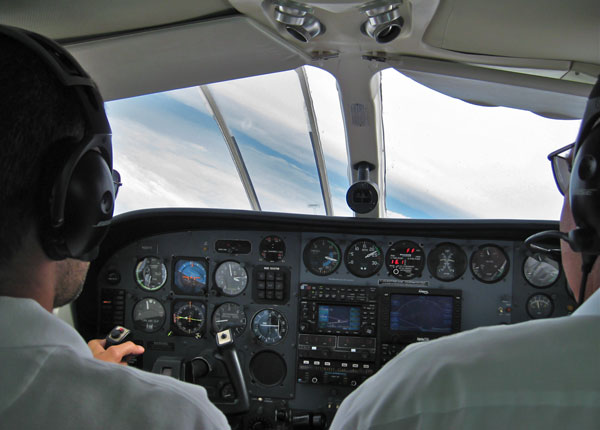
What really makes this aircraft great is the pressurized cabin. What’s the use of having turbocharged engines, which make their money at high altitude, if you can’t go up there without oxygen masks? A typical cruising altitude in the Cessna 340 is around 18,000-21,000’. Above the little guys but below the big guys! At this altitude, you’ll be cruising between 190-205 knots consuming between 30-36 gallons per hour. A family of four can hop in a 340 and get out of town for the weekend, with standard full fuel tanks, and have a range of 1,000 miles with reserves.
In Conclusion
Despite a short 12-year production run, the Cessna 340 still remains one of the most popular and identifiable light twin-engine aircraft in general aviation. It’s a great airplane for those wishing to transition from a high-performance single, or those wishing to add some small commuters to their business fleet. Want to really impress your instructor on your checkout? Learn the fuel system before stepping into the aircraft!

Specifications (Cessna 340A)
Engine: Two Continental TSIO-520-NB turbocharged six-piston engine, 310 hp
Propeller: Three-blade constant-speed McCauley propellers
Wing Span: 38.1 feet
Length: 34.3 feet
Height: 12.6 feet
Fuel Capacity: 163 gallons (including 63-gallon reserve)
Maximum T/O Weight: 5,990 lbs
Standard Empty Weight: 3,966 lbs
Useful Load: 2,024 lbs
Range: 1,406 NM
Service Ceiling: 29,800’
Takeoff Distance over 50’ obstacle: 2,175’
Landing Distance over 50’ obstacle: 1,850’
Max Cruise Speed: 200 knots
Stall Speed: 71 knots, landing configuration
Passengers: five






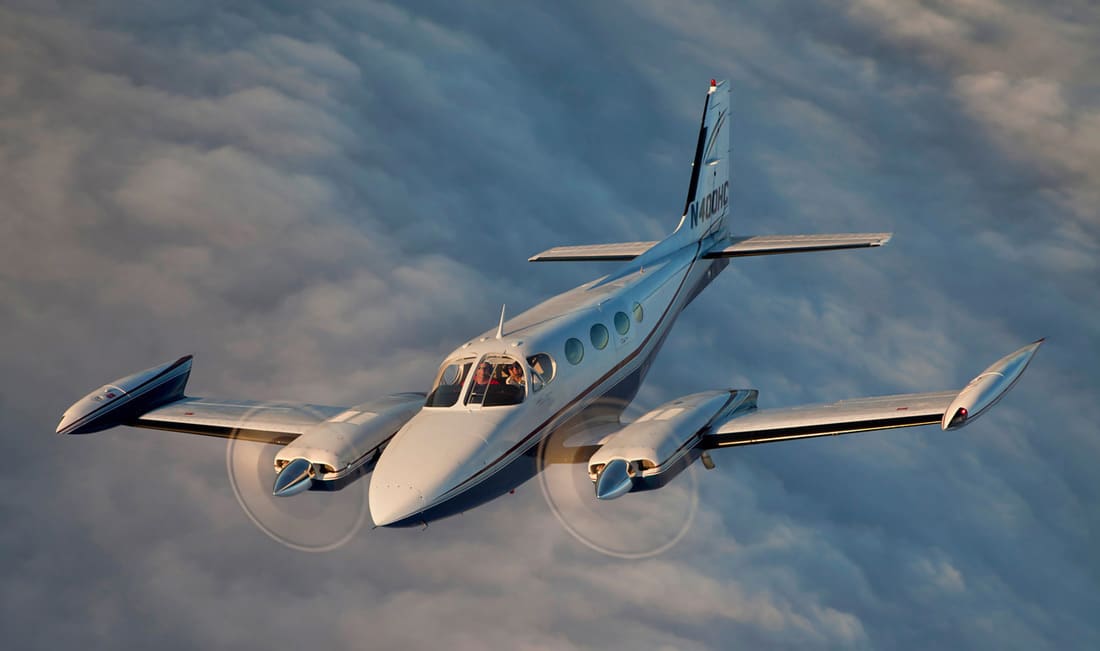



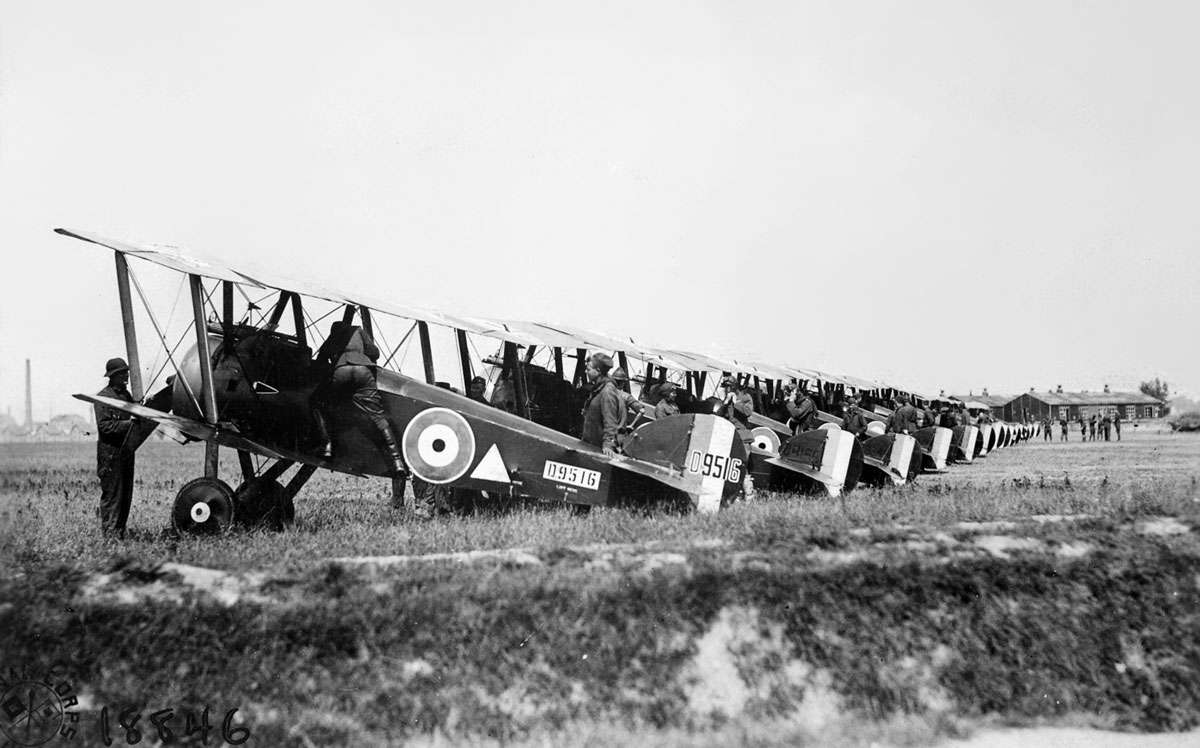




Any one who thinks they are going to get more than 600nm on a standard 163 model is nuts. You need to plan on 40gph block to block and your gonna get about 175-180kts TAS below 15k at best.
One of the best aftermarket products for the Cessna 340/340A are spoilers. PowerPac spoiler have been installed by Ram Aircraft and many other FBO’s since 1990. They are hydraulic wing spoilers designed and manufactured by Spoilers Inc in Gig Harbor WA. They increase descent rates up to 3500fpm without reducing power, as well as eliminate shock cooling the engines.
//Www.PowerPacSpoilers.com
What’s the empty weight of RAM 6 version?